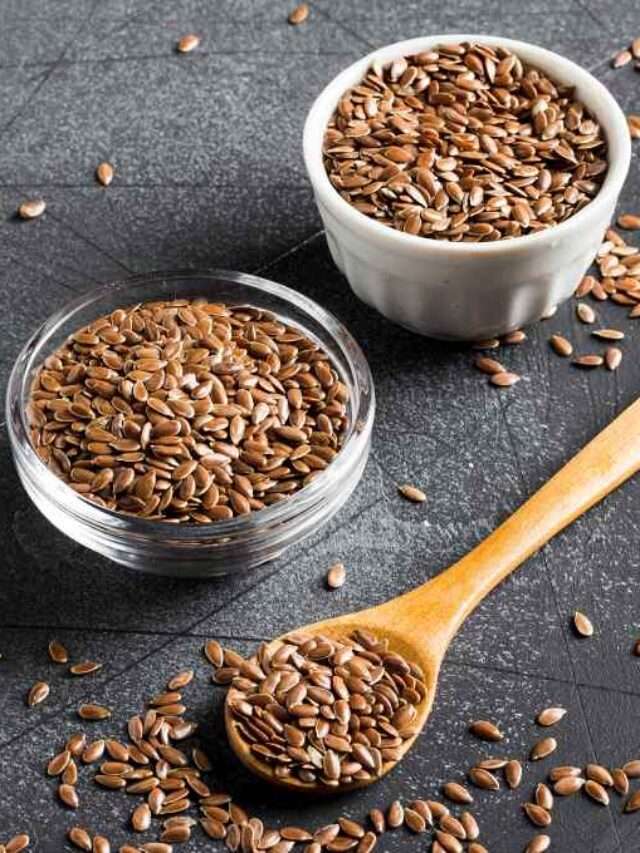WHAT IS INTERMITTENT FASTING?
Intermittent fasting (IF) means you switch between not eating for a while and then having your meals. Unlike traditional diets that focus on specific foods or calorie restrictions, intermittent fasting primarily dictates when you should eat rather than what you should eat. Its rising popularity in recent years is attributed to the potential health advantages it offers, coupled with its adaptable nature.
Types of intermittent fasting
Intermittent fasting (IF) encompasses various approaches that involve alternating periods of fasting (not eating) with periods of eating. Here given some common types of intermittent fasting

16/8 Method of Intermittent fasting
The 16/8 method of intermittent fasting is a popular approach to fasting that involves fasting for 16 hours each day and limiting eating to an 8-hour window. During the fasting period, only non-caloric beverages like water, herbal tea, or black coffee are allowed. This method is appealing to many because it doesn’t require a drastic change in dietary habits; it simply compresses your eating time.
The benefits of the 16/8 method may include improved insulin sensitivity, weight management, and potential health benefits like reducing inflammation.
5:2 Diet of Intermittent fasting
5:2 diet, also known as intermittent fasting, is a popular approach to weight management and improving overall health. This method involves eating regularly for five days of the week and significantly reducing calorie intake for the remaining two non-consecutive days. On those two fasting days, individuals typically limit their calorie intake to around 500-600 calories.
The concept behind the 5:2 diet is that by reducing calorie intake on specific days, the body enters a state of calorie deficit, which can lead to weight loss over time. During the non-fasting days, individuals can eat a balanced and healthy diet.
”
Eat-Stop-Eat of Intermittent fasting
The Eat-Stop-Eat method is a type of intermittent fasting that involves complete fasting for a full 24 hours, one or two times a week. During this fasting period, no calories are consumed, only non-caloric beverages like water, herbal tea, or black coffee are allowed.
The Eat-Stop-Eat approach is designed to create a significant calorie deficit, which can lead to weight loss over time. Advocates of this method claim that it may also provide health benefits like improved insulin sensitivity and cellular repair due to the extended fasting period.
ALSO READhealth benefits of bhuna chana (Roasted Gram)
Alternate-Day Intermittent Fasting
Alternate-Day Fasting, often referred to as ADF, is a form of intermittent fasting that involves alternating between days of regular eating and days of fasting or significant calorie restriction. The pattern typically follows a “feast” day, where you eat as usual, followed by a “fast” day, where you consume very few calories or none at all. Some variations allow for a limited calorie intake (around 500-600 calories) on fasting days.
The primary goal of alternate-day fasting is to create a calorie deficit over time, which can lead to weight loss. Advocates of this approach also suggest potential health benefits such as improved insulin sensitivity, reduced inflammation, and enhanced cellular repair during fasting periods.
Warrior Diet:
The Warrior Diet is a type of intermittent fasting regimen that revolves around a daily eating pattern that involves fasting for most of the day and consuming all of your daily calories within a relatively short eating window, typically around 4 hours.
This approach derives its name from the idea that it mimics the eating patterns of ancient warriors who reportedly ate this way.
Here’s a simplified breakdown of the Warrior Diet:
1.Fasting Phase (20 hours) Intermittent Fasting:
During this extended fasting phase, individuals limit their calorie intake to a minimum or consume only very small amounts of food. Non-caloric beverages like water, herbal tea, and black coffee are usually allowed during this time.
2.Feeding Phase (4 hours) Intermittent Fasting:
In this relatively short window, individuals consume their daily calorie needs. The focus is on nutrient-dense, whole foods to ensure that they get essential nutrients during this period.
Advocates of the Warrior Diet claim it can lead to weight loss, improved insulin sensitivity, and better metabolic health. However, it’s essential to approach this type of fasting with caution. It may not be suitable for everyone, especially those with medical conditions or those who are new to fasting.
OMAD (One Meal a Day):
OMAD, which stands for “One Meal a Day,” is a form of intermittent fasting characterized by an extreme daily eating pattern. As the name suggests, individuals following OMAD consume all their daily caloric intake in a single meal, typically within a one-hour window.
The remaining 23 hours of the day are spent fasting, which includes abstaining from caloric beverages during fasting periods.
Here’s a simplified breakdown of OMAD:
1.Fasting Period (23 hours)Intermittent Fasting:
During this extended fasting phase, individuals consume no calories and typically stick to non-caloric beverages like water, herbal tea, or black coffee.
2.Feeding Window (1 hour)Intermittent FastingIntermittent Fasting:
In this brief eating window, individuals consume a single, large meal that provides all their daily nutritional requirements.
OMAD is an extreme form of intermittent fasting and may not be suitable for everyone. It requires careful planning to ensure that the single meal provides all essential nutrients. Advocates claim that OMAD can lead to weight loss, improved insulin sensitivity, and even mental clarity.
However, it’s crucial to consult with a healthcare professional before adopting this fasting approach, especially if you have underlying medical conditions or concerns about its suitability for your lifestyle.
Balancing the nutritional content of the one meal is critical to ensure you meet your daily dietary needs. As with any fasting method, the emphasis should be on overall health and well-being rather than solely on weight loss or extreme calorie restriction.
The 12-Hour Fast of Intermittent fasting:
The 12-Hour Fast, also known as the 12/12 method, is one of the simplest and most accessible forms of intermittent fasting. It involves fasting for 12 hours and eating during a 12-hour window, usually from breakfast to dinner or lunch to late evening. This approach is often considered an excellent starting point for individuals new to intermittent fasting.
Here’s a simplified breakdown of the 12-Hour Fast:
1.Fasting Period (12 hours):
During this fasting phase, individuals abstain from consuming any calories. They can still drink non-caloric beverages like water, herbal tea, or black coffee.
2.Feeding Window (12 hours):
In this 12-hour period, individuals consume their daily calorie intake. It typically includes three meals and possibly snacks depending on personal preferences.
The 12-Hour Fast is relatively easy to implement and can be integrated into most daily routines. It may provide benefits such as improved digestion, stable blood sugar levels, and better sleep, primarily by allowing the digestive system to rest overnight.
This method is often recommended for beginners or individuals seeking a less restrictive fasting regimen. It can also serve as a stepping stone to more advanced forms of intermittent fasting.
READ MORE:DIY Coconut Milk Hair Mask | Coconut Milk For Healthy Long Hair
The 24-Hour Fast of Intermittent fasting:
The 24-Hour Fast, also known as a full-day fast or a dinner-to-dinner fast, is a type of intermittent fasting where an individual refrains from consuming any calories for a complete 24-hour period. This fasting approach can be done once or twice a week and has gained popularity for its potential health benefits.
Here’s a simplified breakdown of the 24-Hour Fast:
1.Fasting Period (24 hours):
During this extended fasting phase, individuals abstain from all calorie intake. They can still drink non-caloric beverages like water, herbal tea, or black coffee to help manage hunger and stay hydrated.
2.Feeding Window (0 hours):
No food is consumed during the 24-hour fasting period.
The 24-Hour Fast is often considered an intermediate-level fasting method and is more challenging than shorter fasting windows like the 12-hour fast. It can help improve insulin sensitivity, promote autophagy (cellular repair), and contribute to weight loss due to the calorie deficit created during the fast.
Before starting a 24-hour fast, it’s essential to consult with a healthcare professional, particularly if you have underlying medical conditions or concerns about its suitability for your lifestyle.
Additionally, it’s crucial to focus on a balanced and nutritious meal when breaking the fast to ensure you meet your daily nutritional requirements. As with any fasting approach, the emphasis should be on overall health and well-being rather than extreme calorie restriction.
The 36-Hour Fast:
The 36-Hour Fast is an advanced form of intermittent fasting that involves abstaining from calorie consumption for a continuous 36-hour period. This fasting method is typically done from dinner on one day to breakfast or lunch on the following day, which results in a full day and a half of fasting.
Here’s a simplified breakdown of the 36-Hour Fast:
1.Fasting Period (36 hours):
During this extended fasting phase, individuals consume no calories. They can, however, drink non-caloric beverages like water, herbal tea, or black coffee to help manage hunger and stay hydrated.
2.Feeding Window (0 hours):
No food is consumed during the entire 36-hour fasting period.
The 36-Hour Fast is considered an advanced fasting method and should only be undertaken by those with prior experience in intermittent fasting and a thorough understanding of their body’s response to extended fasting periods.
Potential benefits of the 36-Hour Fast may include improved insulin sensitivity, enhanced autophagy (cellular repair), and significant calorie reduction, which can contribute to weight loss.
However, it’s crucial to consult with a healthcare professional before attempting this fasting approach, especially if you have underlying medical conditions or concerns about its suitability for your lifestyle.
Breaking the fast should be done thoughtfully with a balanced and nutritious meal to ensure you meet your daily nutritional needs. As with any fasting approach, the focus should be on overall health and well-being rather than extreme calorie restriction.
Time-Restricted Eating (TRE) of Intermittent fasting:
Time-Restricted Eating (TRE) is a popular form of intermittent fasting that focuses on limiting the daily eating window to a specific time frame while fasting for the remainder of the day. TRE is often considered one of the more flexible and sustainable approaches to intermittent fasting.
Here’s a simplified breakdown of Time-Restricted Eating:
1.Fasting Period (variable) :
During the fasting phase, individuals abstain from consuming calories for a specific duration, typically ranging from 12 to 16 hours or more, depending on individual preferences and goals. Non-caloric beverages like water, herbal tea, or black coffee are often allowed during the fasting period.
2.Feeding Window (8 to 12 hours):
In this time frame, individuals consume all their daily calories. The length of the feeding window can vary depending on individual needs and preferences.
The main principle behind TRE is to align your eating schedule with your body’s natural circadian rhythm. This can potentially lead to benefits such as improved metabolism, better blood sugar regulation, and weight management.
The most common TRE approach is the 16/8 method, where individuals fast for 16 hours and eat within an 8-hour window.
TRE is relatively adaptable and can be integrated into various lifestyles. It allows individuals to choose the fasting and feeding hours that best suit their daily routines.
However, as with any fasting method, it’s essential to maintain a balanced and nutritious diet during the feeding window to ensure you meet your daily nutritional requirements. TRE emphasizes overall health and well-being, making it an appealing option for many people.
Extended Fasting:
Extended fasting, also known as prolonged fasting, is an advanced form of intermittent fasting where individuals abstain from calorie consumption for an extended period, typically lasting more than 48 hours.
This fasting method is often used for specific health and therapeutic purposes and should be undertaken with caution and medical supervision.
Here’s a simplified breakdown of extended fasting:
1.Fasting Period (48 hours or more):
During this prolonged fasting phase, individuals consume no calories. They may drink non-caloric beverages like water, herbal tea, or black coffee to help manage hunger and stay hydrated.
2.Feeding Window (0 hours) Intermittent Fasting:
No food is consumed during the entire extended fasting period.
Extended fasting can range from 48 hours to several days or even longer, depending on individual goals and medical guidance. It’s typically done for specific purposes such as autophagy (cellular repair), improved metabolic health, or for individuals seeking therapeutic benefits like managing certain medical conditions.
Before attempting extended fasting, it is essential to consult with a healthcare professional or a qualified healthcare provider. This is particularly important if you have underlying medical conditions or concerns about the safety and suitability of extended fasting for your specific health circumstances.
Breaking an extended fast should be done thoughtfully with a focus on refeeding with easily digestible foods to avoid digestive discomfort and complications.
As with any fasting approach, the emphasis should be on overall health and well-being, and extended fasting should only be undertaken with careful consideration and medical guidance.
Before starting a Intermittent fasting, it’s essential to consult with a healthcare professional, particularly if you have underlying medical conditions or concerns about its suitability for your lifestyle.
Additionally, it’s crucial to focus on a balanced and nutritious meal when breaking the fast to ensure you meet your daily nutritional requirements. As with any fasting approach, the emphasis should be on overall health and well-being rather than extreme calorie restriction.









